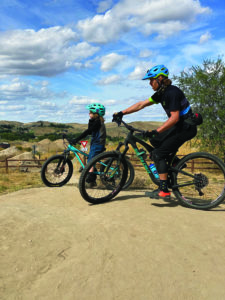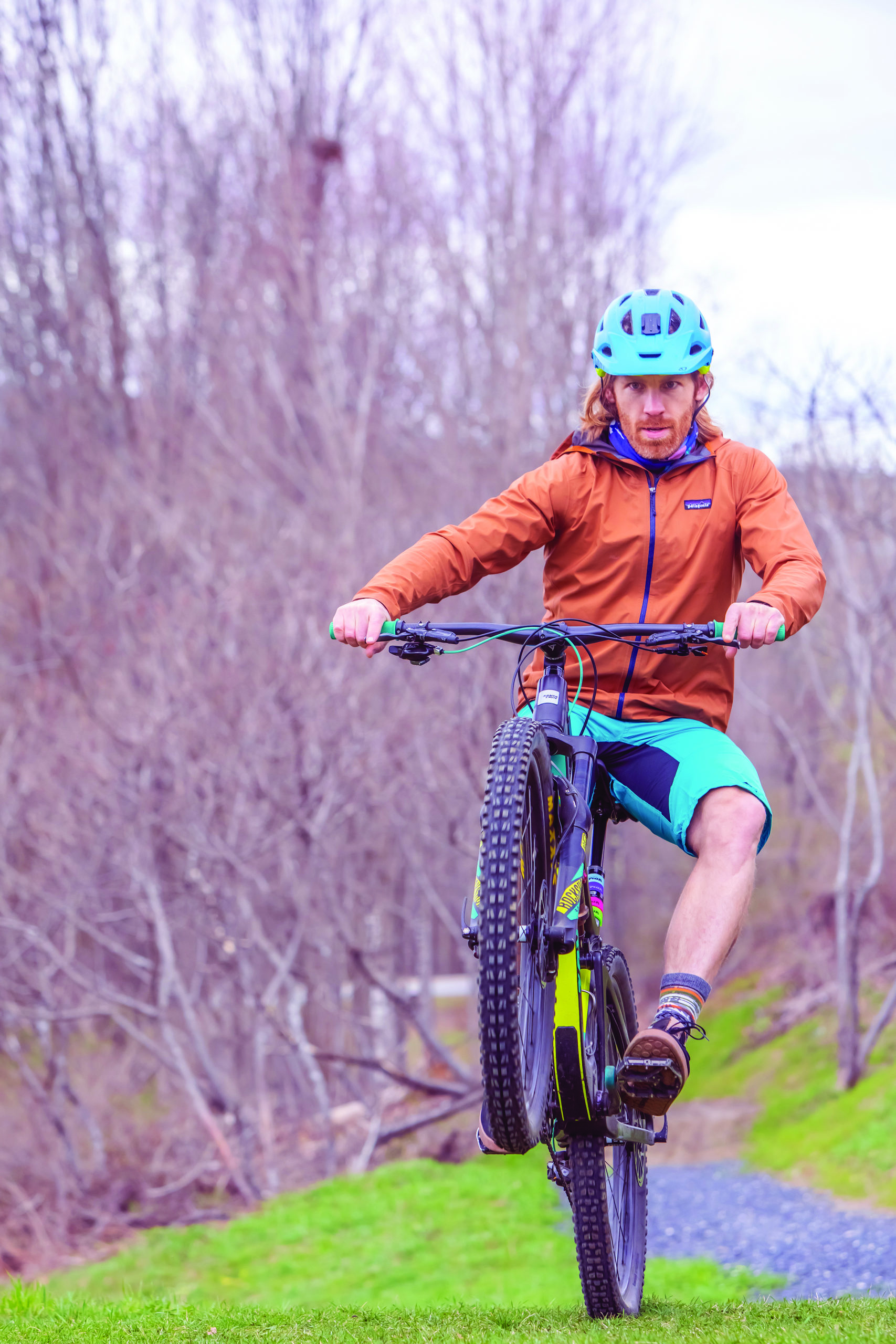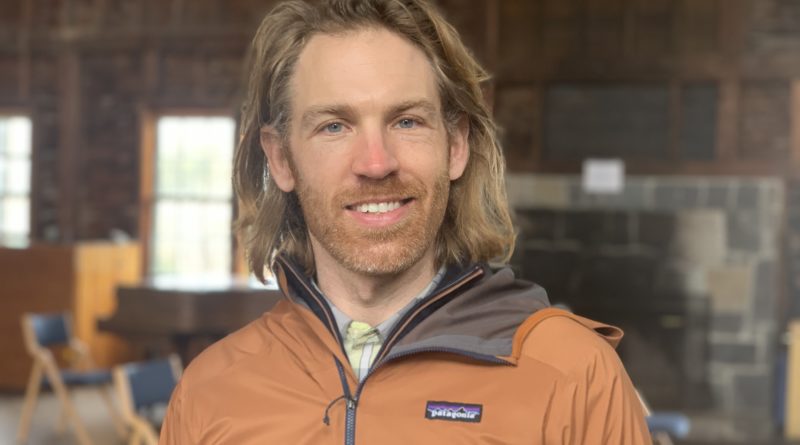Meet VMBA’s New Leader: Nick Bennette
Name: Nick Bennette Age: 38. Family: Wife, Carrie; son Theo
Lives in: Waterbury Center Works as: The executive director of the Vermont Mountain Biking Association
Primary sports: Mountain biking, cyclocross, road riding.
When Tom Stuessy stepped down in January after nearly a decade leading the Vermont Mountain Biking Association, there were big shoes to fill. It looked like it would be tough to find someone to take over the role of executive director. Then Nick Bennette, a Cat 1 road rider with some serious cyclocross and mountain biking cred, threw his name in the hat. It didn’t hurt that the former McKinsey consultant from Seattle had also been an active member of the Evergreen MTB Alliance, Washington’s equivalent of VMBA. Bennette has a master’s degree and a Ph.D. in chemistry from Princeton and has worked with a variety of non-profits in the health, environment and sustainability sectors. This past spring he moved to Waterbury Center with his wife Carrie, a skier and cyclist, and son Theo.
What are the best ways for mountain biking to grow here?
The opportunities are enormous and varied and a lot of these have started to crystallize as I’ve had the chance to talk with all of our 27 chapters and some of the partners. I view what we do as this really interesting sort of amalgam of stewards of the forest, fostering outdoor recreation and health and also driving economic development in rural places. But the reality is there are real challenges in terms of sustainable development so one of our biggest challenges and opportunities is to tell our story.

What is the VMBA story you would like to tell?
The chapters don’t need to be doing anything different. There’s good community engagement and the trail building has become incredibly good. I could talk about things like progression and creating networks that engage new riders, but I think the narrative we really need to get across is that we are building assets in the woods that are not purely for mountain bikers–walking and hiking paths. The chapters are the ones who are educating me on this. They are the ones who are saying that they know that our ability to have credibility in a community is tied to that. And that’s the narrative we need to get out there as we still face enormous hurdles on the regulatory front. We still haven’t really dealt with Act 250 and it’s still difficult to build a new trail.
If you had a magic wand, what would you change about Act 250?
I’d love to see an alternative process for trails. They should be subject to best management practices, absolutely, but they also should be self-regulated by the approved organizations that are part of the Vermont Trail System. It’s super important that there are best practices. But it is completely unreasonable to put every trail building organization through an arduous permitting process up front. You can put them in charge of meeting requirements for trails, parking lots and congestion and if those requirements are not met, the trail gets closed.

Did you encounter anything like Act 250 in Washington state?
No, and the big difference in Washington, is you know, the vast majority of trails are on public lands. In Vermont, 70% to 80% of our trails are on private land so Act 250 is really important. Don’t get me wrong, Act 250 is not bad— it’s an immense reason why Vermont is what it is. But because Evergreen has such a strong relationship with the state, they don’t have to go through the same permitting hurdles and can turn the dollars they raise into trails like magic.
So how did you get into cycling?
I was a punk BMX kid when I was in my early teens in St. Louis, MO. There were not a whole lot of trail assets there back in the 90s and so I’d ride my BMX bike around town. I was fortunate enough that we had a bike shop in the neighborhood that was really getting into mountain bikes. I would go to the bike shop, buy parts and I’d put them on my bike outside the shop. One day the manager asked me if I wanted a summer job. They taught me how to work on bikes and helped me get my first mountain bike. It was a really cool environment. Even today, when I walk into a bike shop, I just have this instant emotional connection. I feel like I grew up in the basement of a bike shop.
So how did you become such a good racer — in road and cyclocross?
I went to Boston University for undergrad and one of the things I loved is how close all the schools were in the Eastern collegiate cycling conference. We’d have mountain bike races in the fall and road races in the spring. It wasn’t a varsity sport or anything and we were like this Mystery Machine/Scooby-Doo band that would just head out anywhere to ride on weekends. Eventually, I gravitated toward more road racing. I loved doing the Burlington crit in the Green Mountain Stage race. And I loved cyclocross. I am the current Masters’ champion in Washington state. In 2019, the Masters’ Nationals were in Lakewood, Wa., my home turf. I went in hopes of winning and the first 20 minutes of the race were some of my best in racing. I had this plan, executed it and moved through the pack to the front and thought “Wow, I’m here.” Then, I had the worst 20 minutes as I tried to do damage control going through the same sections but I ended up in the top 10. I hope this fall I can dust off the cyclocross bike again.
So what draws a guy who has a Ph.D. from Princeton in chemistry and who’s worked for McKinsey, the management consultant giant, to move from Seattle to take a job at VMBA?
A lot of my career has been driven by the desire to make a difference. That’s what originally took me to get my graduate degree and work on a project to create renewable energy through biofuel from algae. But to get there was going to be years away. What drove me to McKinsey was the idea that I really wanted to be involved in sustainability and the environment but I was much more drawn to working with solutions that were actually on the shelf and could be implemented in my lifetime. After McKinsey I went to work for a boutique firm that focused on non-profits and mission-driven organizations and I was also doing a lot of work with Evergreen, Washington state’s mountain bike organization. What I started to focus on is this: what I’d really like to do is to help get more trails built and connect people to the things that I love about the environment.
How did you hear about the VMBA job?
During Covid, the impact investing boutique I’d been working at ground to a halt. So, in August of 2020 we sold our house in Seattle and piled in a Sprinter van to go see some of the West. We had no real plan, other than to travel and ride various trail networks. A friend called me and told me about the VMBA position. My wife’s family has been in Vermont for 20 years. We’d been married here in 2011 and my son Theo was saying ‘please don’t make me do remote schooling again’ so we had been thinking of coming back here anyway. As I started to do my homework, I realized that the trail network here in Vermont had just exploded since 2011 when we had moved to Seattle, largely due to the good work of Tom Stuessy.
How does VMBA measure up to what you saw in Washington state?
Washington has seven times as much area and 12 times as many people, yet our statewide mountain bike organization, Evergreen has the same number of members as VMBA. So, if you compare the straight numbers (and I haven’t extrapolated for people from out of state) more than 1% of Vermont’s population are members of VMBA, which is bananas. That’s a significant constituency of people who want to ride bikes in this state. Anywhere you go you feel that community presence and involvement in mountain biking.
What about the trails and riding here, how does that compare?
Outside Seattle you can drive to 20- and 25-mile loops that take you to places where there is no development and you have big views of Mt. Rainier, the Cascades or Olympics. Vermont doesn’t have that. But you also don’t need to get in your car to drive somewhere to do a big ride. In some ways, we are more advanced in that we have all these trail networks that are connected to communities. The chapters are doing really awesome things like creatin trail networks so kids can take greenways from their schools to their trails.
What about the Velomont trail? Ground-breaking on the new Rochester segment just started. Do you see that proposed state-wide trail becoming something like Moab’s White Rim Trail, a bucket-list destination ride?
It’s a long-term project that I hope will be a legacy thing, like the Long Trail for hiking. What Caitrin Maloney and Angus McCusker and the folks who are working on Velomont have planned is incredible. For now, what’s really cool about that proposed trail for me is that it represents a physical handshake between chapters and a chance to connect existing networks.
There are currently three initial priority segments: along the Lamoille Valley Rail Trail, from Rochester down to Killington and then in the southern part of the state down to the Massachusetts border. But the beauty of this is that unlike the White Rim Trail, which has no real stops along the way, you don’t have to do the whole thing at once– you can do segments.
And as we get the Vermont Huts System aligned with it, we can build it up in stages where each stage is a destination.
E-bikes: good or bad? Are you happy about the new legislative ruling that classifies e-bikes as “non-motorized?”
I think a blanket statements like “E-bikes are bad” is not necessarily a good understanding of what e-bikes are right now and so we’re putting up on our site some guidance to help educate members and anyone who wants to go to the site what e-bikes are like, how they operate in Vermont, and what are the rules because now they have such a patchwork.
Vermont lost its two large mountain bike festivals, VMBAfest and NEMBAfest. Do you see those returning or the new festival at Ascutney taking their place?
There’s a really important role that a festival of that size plays but there’s also limited energy and bandwidth among riders so to have two or more of them seems too much. I am glad that Ascutney Trails and Mountain Flyer are putting on Flow State this year. What I do feel strongly about is that a mountain bike festival in Vermont of that scale belongs to the chapters and the collective ridership in Vermont and that wherever a festival is going to hosted that those trails and that chapter become the lead on the logistics. But I would like to see a festival —it’s a great way to get a lot of people excited about riding bikes.

